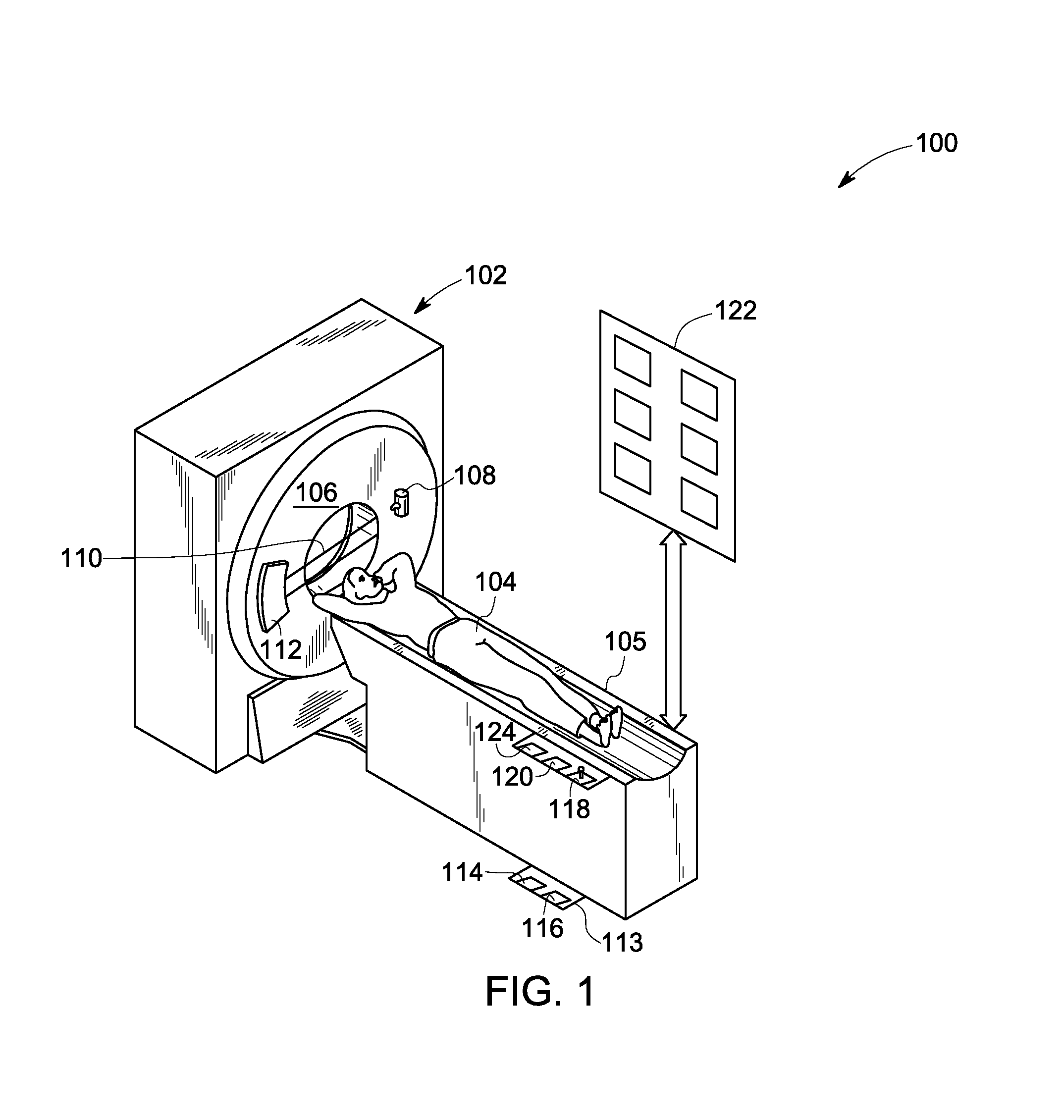Systems and methods for interventional imaging
a technology of interventional imaging and system, applied in the field of interventional imaging, can solve the problems of increasing the ionizing radiation dose and exhaustion of the medical practitioner, challenging the understanding of the relationship of the insertion and navigation of the catheter within the different branches of the vascular system, and limiting the understanding of the medical practitioner
- Summary
- Abstract
- Description
- Claims
- Application Information
AI Technical Summary
Benefits of technology
Problems solved by technology
Method used
Image
Examples
Embodiment Construction
[0018]The following description presents embodiments of imaging systems and methods that provide high-fidelity 2D projection and 3D volumetric images of a scanned organ for use in diagnostic and interventional procedures using reduced radiation dosage and examination time. The interventional procedures, for example, may include angioplasty, stent placement, balloon septostomy, Transcatheter Aortic-Valve Implantation (TAVI), localized thrombolytic drug administration, tumor embolization and / or an electrophysiology study.
[0019]Additionally, the following description presents embodiments of imaging systems and methods that minimize contrast agent dosage, x-ray radiation exposure and scan durations. Certain embodiments of the present systems and methods may also be used for reconstructing high-fidelity 3D cross-sectional images in addition to the 2D projection images for allowing real-time diagnosis and / or therapy delivery, and efficacy assessment. Particularly, certain embodiments illu...
PUM
 Login to View More
Login to View More Abstract
Description
Claims
Application Information
 Login to View More
Login to View More - R&D
- Intellectual Property
- Life Sciences
- Materials
- Tech Scout
- Unparalleled Data Quality
- Higher Quality Content
- 60% Fewer Hallucinations
Browse by: Latest US Patents, China's latest patents, Technical Efficacy Thesaurus, Application Domain, Technology Topic, Popular Technical Reports.
© 2025 PatSnap. All rights reserved.Legal|Privacy policy|Modern Slavery Act Transparency Statement|Sitemap|About US| Contact US: help@patsnap.com



